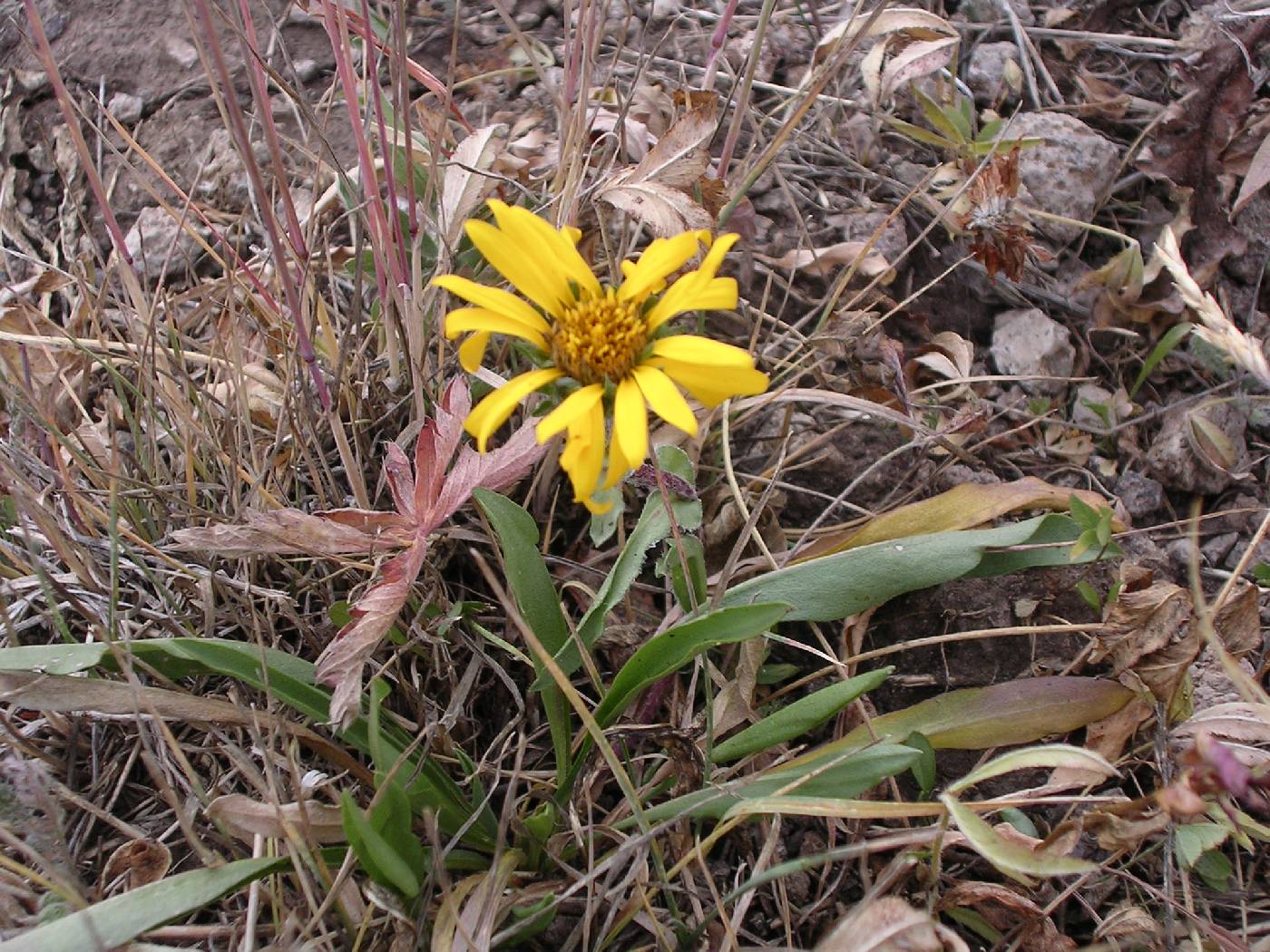Pyrrocoma
|
Family: Asteraceae |
Perennials, 5-50(-90) cm, sericeous, tomentose, or glabrous, sometimes sessile- or stipitate-glandular (taproots woody, caudices often short, branched). Stems decumbent to ascending or erect (leafy or subscapiform, often red-tinged), mostly simple. Leaves basal and cauline; alternate; basal usually short-petiolate, cauline sessile; basal blades 1-nerved, oblanceolate to elliptic or nearly linear (3-250(-450) × 3-30 mm, bases usually attenuate), margins entire or spinulose-dentate or -serrate or shallowly laciniate; cauline often lanceolate, reduced distally (bases sometimes clasping). Heads usually radiate or disciform, rarely discoid, borne singly or 2-5(-15) in racemiform, spiciform, or loose, corymbiform arrays (subtended by leafy bracts in P. carthamoides and P. radiata). Involucres hemispheric to narrowly campanulate, 5-15(-30) × 5-60 mm. Phyllaries 10-40 in 2-6 series, appressed to loosely spreading, 1-nerved, oblanceolate to oblong or linear, equal or unequal, usually herbaceous and yellow-green or with distinct, green apical patch, sometimes proximal 2 / 3 white-indurate (apices occasionally squarrose, obtuse or acute, occasionally mucronate), faces glabrous or densely villous to tomentose. Receptacles convex, pitted, epaleate. Ray florets 10-80, pistillate, fertile; corollas yellow (usually 10-35 mm, sometimes reduced, not surpassing involucres). Disc florets 20-100, bisexual, fertile; corollas yellow, tubes ± equaling tubular-funnelform throats, lobes 5, erect, deltate; style-branch appendages triangular. Cypselae subcylindro-fusiform, terete to ± flattened, 3-4-angled, faintly 10-12-nerved, faces sericeous to strigose or glabrous; pappi persistent, of 15-60 brownish, rigid, unequal, smooth, apically attenuate bristles in 1 series. x = 6. Pyrrocoma has often been treated as a section within genus Haplopappus (H. M. Hall 1928; A. Cronquist 1994). Various workers have suggested that Haplopappus be divided into a number of smaller genera such as Pyrrocoma, Tonestus, Stenotus, Chrysothamnus, and others. Pyrrocoma was recognized as a separate genus in the dissertation by R. A. Mayes (1976) and in a floristic treatment by G. K. Brown (1993b). It is characterized by its persistent basal rosettes, yellow-rayed heads on scapiform or few-bracteate peduncles, and obtuse, acute, or mucronate phyllaries. The heads vary greatly in size and commonly are sessile or subsessile and borne singly or in spiciform arrays. The base chromosome number of x = 6 is rare in Haplopappus in the broad sense, and supports recognition of a distinct genus (Mayes). Most species of Pyrrocoma are diploid, some tetraploid or hexaploid. The species are frequently polymorphic, and many subspecies and varieties have been named. Some of these taxa are only weakly characterized and their status needs clarification. The present treatment largely follows the works of Hall and Mayes.
|

